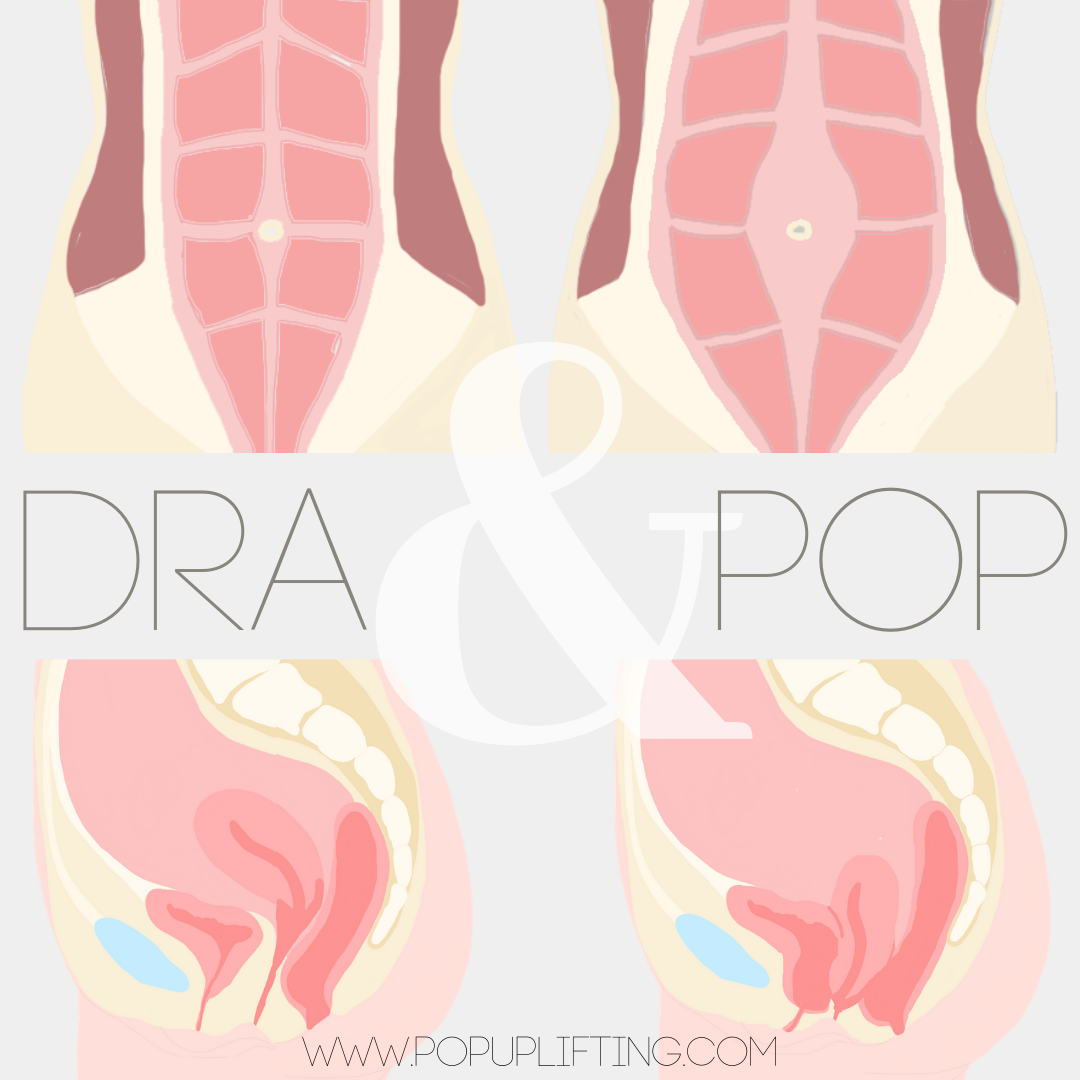Diastasis recti & POP
Diastasis recti abdominis (DRA), a softening and stretching of the connective tissue that runs from sternum to pubic bone (the linea alba), is an incredibly common occurrence during the perinatal chapters.
Typically occurring during pregnancy, this broadening is an incredibly normal & anticipated feature of the abdominal wall. At 6 weeks PP, DRA is still present in roughly half, and in roughly third at one year PP. Many are concerned that DRA causes POP (or that POP could prohibit an abdominal wall from rebuilding tension and function). The hypothesis is often that the co-contraction of the TrA and PFM is altered in those with DRA/POP, therefore influencing the development of further dysfunction.
However, research has failed to support the idea that DRA and POP have a causative relationship. In fact, a prospective, blinded study by Kari Bø et al. (2016) found no association between DRA & POP: following pregnancy, there was no significant difference between rates of urinary incontinence or prolapse between the DRA and non-DRA groups. “Until more research is available, clinicians should use caution when postulating associations between PFM, pelvic floor dysfunctions, and the abdominal muscles."
Does that mean DRA and POP are entirely unrelated? No! DRA and POP share several similar features:
👉Involve connective tissue
👉Influenced by IAP
👉Are most commonly experienced as a result of pregnancy
👉Can likely be impacted by PFPT and progressive strength training, but sometimes require surgery to reach full resolution
👉Can be managed & do not necessarily need to limit a person from living an active life!
👉Are often reduced to simply be discussions of inter-recti distance (in DRA) or grade (in POP). While relevant, these numbers don't give us all the information we need to fully understand the function/performance of the person and the abdominal wall/pelvic floor. Look beyond the gap and the grade!
❓Should you prioritize rehab of one before/over the other? It is likely that much of the rehab for one's pelvic floor will also support one's abdominal wall (and vice versa). Rehab for both tends to focus on strategy manipulation, learning how to best manage pressure and tension, and progressive strengthening to facilitate a return to function and fitness.
Bø, K., Hilde, G., Tennfjord, M. K., Sperstad, J. B., & Engh, M. E. (2016). Pelvic floor muscle function, pelvic floor dysfunction and diastasis recti abdominis: Prospective cohort study. Neurourology and Urodynamics, 36(3), 716-721. doi:10.1002/nau.23005 Sperstad, J. B., Tennfjord, M. K., Hilde, G., Ellström-Engh, M., & Bø, K. (2016). Diastasis recti abdominis during pregnancy and 12 months after childbirth: Prevalence, risk factors and report of lumbopelvic pain. British Journal of Sports Medicine, 50(17), 1092-1096. doi:10.1136/bjsports-2016-096065

